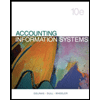
1.
Throughput time is the total time required for the completion of a process. For instance, the time required to manufacture machinery from the beginning till its end is the throughput time. The throughput time comprises process time, inspection time, move time, and queue time. Wait time is not a part of throughput time.
:
The throughput time.
2.
The manufacturing cycle refers to the amount of time in the manufacturing process that is spent on enriching or improving the product. Basically, it is the time taken by an organization in order to convert raw material into finished goods. Manufacturing cycle time includes material movement time, loading time, idle waiting time, machining and assembly time, inspection time, and so on.
:
The manufacturing cycle efficiency for the quarter.
3.
Throughput time is the elapsed time from the time of inception of the production process till the goods are dispatched to the customer. The throughput time is made up of four elements. It is the total of process time, inspection time, move time, and queue time.
:
The percentage of throughput time spent in non-value-added activities.
4.
Delivery cycle time is the total time required to produce as well as deliver the product to the customers. Basically, the elapsed time from the procurement of a client order until the final product is dispatched is the delivery cycle time.
:
The delivery cycle time.
5.
The manufacturing cycle refers to the amount of time in the manufacturing process that is spent on enriching or improving the product. Basically, it is the time taken by an organization in order to convert raw material into finished goods. Manufacturing cycle time includes material movement time, loading time, idle waiting time, machining and assembly time, inspection time, and so on.
:
The new MCE if by using Lean Production all queue time during production is eliminated.
Want to see the full answer?
Check out a sample textbook solution
Chapter 12 Solutions
MANAGERIAL ACCOUNTING (LL+CONNECT)
- provide correct answerarrow_forwardInternal control refers to the processes and procedures implemented by an organization to ensure the integrity of financial and accounting information, promote accountability, and prevent fraud. These controls are designed to provide reasonable assurance that the organization achieves its objectives in operational efficiency, financial reporting reliability, and compliance with laws and regulations. Internal control is a comprehensive system that includes a variety of checks and balances, such as segregation of duties, authorization and approval processes, reconciliations, and physical security measures. It is an integral part of an organization's governance framework, helping to safeguard assets, improve operational efficiency, and ensure accurate and timely financial reporting. Respond to the above postarrow_forwardI need the correct answer to this general accounting problem using the standard accounting approach.arrow_forward
- You are a team of accounting consultants hired by the company VinGrenDom Ltd., a regional utility and manufacturing firm expanding into the Eastern Caribbean. The Board of Directors is requesting an accounting report that addresses three critical areas in their financial statements. Part A: Working Capital 1. Define working capital and explain its importance in financial health and liquidity management. 2. Assess how the matching concept and accrual basis affect the reporting of current assets and liabilities. 3. Using a hypothetical balance sheet (you may create one), identify at least 5 current assets and 5 current liabilities and analyze how changes in these elements affect liquidity ratios. 4. Recommend at least two strategies VinGrenDom Ltd. can implement to optimize working capital.arrow_forwardProvide best solution accountingarrow_forwardGeneral Accounting solve this problemarrow_forward
- Explain the theoretical concepts underlying equity (e.g., residual interest, stewardship, and proprietary theories)arrow_forwardGeneral Accounting Questionarrow_forwardSea Harbor, Inc. has a marginal tax rate of 35 percent and an average tax rate of 22 percent. If the firm earns $79,500 in taxable income, how much will it owe in taxes? a. $10,335. b. $16,695. c. $17,490. d. $27,030. e. $27,825.arrow_forward
 Pkg Acc Infor Systems MS VISIO CDFinanceISBN:9781133935940Author:Ulric J. GelinasPublisher:CENGAGE L
Pkg Acc Infor Systems MS VISIO CDFinanceISBN:9781133935940Author:Ulric J. GelinasPublisher:CENGAGE L Managerial Accounting: The Cornerstone of Busines...AccountingISBN:9781337115773Author:Maryanne M. Mowen, Don R. Hansen, Dan L. HeitgerPublisher:Cengage Learning
Managerial Accounting: The Cornerstone of Busines...AccountingISBN:9781337115773Author:Maryanne M. Mowen, Don R. Hansen, Dan L. HeitgerPublisher:Cengage Learning Managerial AccountingAccountingISBN:9781337912020Author:Carl Warren, Ph.d. Cma William B. TaylerPublisher:South-Western College Pub
Managerial AccountingAccountingISBN:9781337912020Author:Carl Warren, Ph.d. Cma William B. TaylerPublisher:South-Western College Pub Financial And Managerial AccountingAccountingISBN:9781337902663Author:WARREN, Carl S.Publisher:Cengage Learning,
Financial And Managerial AccountingAccountingISBN:9781337902663Author:WARREN, Carl S.Publisher:Cengage Learning,



